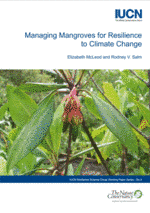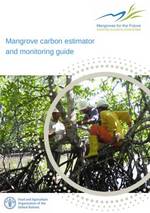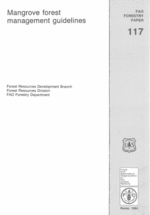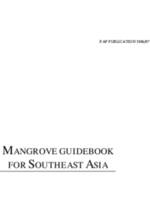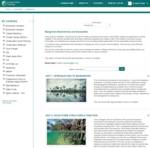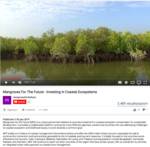الأدوات
الأداة هي مصدر يوظف لدعم تنفيذ الإدارة المستدامة للغابات وتوجيهها. ويشتمل هذا القسم على جميع الأدوات المتاحة في مجموعة أدوات لإدارة المستدامة للغابات التي قد تكون على شكل إصدارات أو مقاطع فيديو حول التعلم الإلكتروني أو برمجيات وما إلى ذلك.
بوسعكم تصفح "الأدوات" من خلال كتابة كلمات أساسية في مربع البحث المجاني أو بإمكانكم تضييق نطاق البحث باستخدام فلاتر موجودة على الجانب الأيمن من الصفحة.
This paper provides an overview of mangrove ecosystems, the benefits of mangroves to people, and the human and global threats that compromise mangrove ecosystems. It describes the impacts of climate change on mangroves and outlines tools and strategies that enhance mangrove resilience.
This paper is an attempt to provide some considerations...
The typical practice by smallholder teak growers of letting trees grow without management input has resulted in poor quality plantations. Various questions arise when farmers start to better manage their teak plantations. This book provides practical guidance in addressing these questions by explaining in detail the techniques of parent tree...
Dave Nowak, research forester, USDA Forest Service, Northern Research Station explains how to manage urban forests for climate change at the 2014 Urban Tree Conference. He particularly focuses on the climate change and cities, factors of change, urban forest effects on climate change and steps towards sustainability.
Mangroves exist in the inter-tidal zone of sheltered tropical and subtropical coasts, and in Southeast Asia are home to 42 tree and shrub species found nowhere else (Giesen et al. 2006). These ‘true mangrove species’ and other associate species are adapted to marine and brackish conditions, and are capable of...
Growing awareness of the protective, productive and socia-economic functions of tropical mangrove ecosystems, and of the consequences of their deterioration, has highlighted the need for the conservation and sustainable, integrated management of these valuable resources. Given their multiple-use potential, it is imperative that the management of mangrove based terrestrial and...
This manual is intended to be a guide to the management and conservation of mangrove plants of Southeast Asia, i.e. all higher plants occurring in mangroves, and not only those species exclusive to this habitat. Southeast Asia was chosen as geographic scope, as this region has proven to be the...
This study provides an overview of policy and institutional frameworks for mangrove management in Pakistan, Thailand and Viet Nam. In spite of these values, mangroves in Asia continue to be converted to other land uses, and sustainable financing for their protection has not been forthcoming. This has resulted from limited...
Rapid losses of mangroves over the past 50 years have had negative consequences on the environment, the climate, and humanity, through diminished benefits such as carbon storage, coastal protection and fish production. Restoration of mangrove forests is possible, and has already been undertaken in many settings, but such efforts have...
Along tropical coastlines, mangroves are vital for healthy ecosystems and human communities. Despite the significance of these habitats, in the last few decades they have been extensively degraded and cleared, often in the interest of economic growth. Fortunately, such attitudes are changing and there is now increasing global appreciation for...
Mangroves for the Future (MFF) is a unique partner-led initiative to promote investment in coastal ecosystem conservation for sustainable development. It provides a collaborative platform among the many different agencies, sectors and countries who are addressing challenges to coastal ecosystem and livelihood issues, to work towards a common goal.
MFF...

